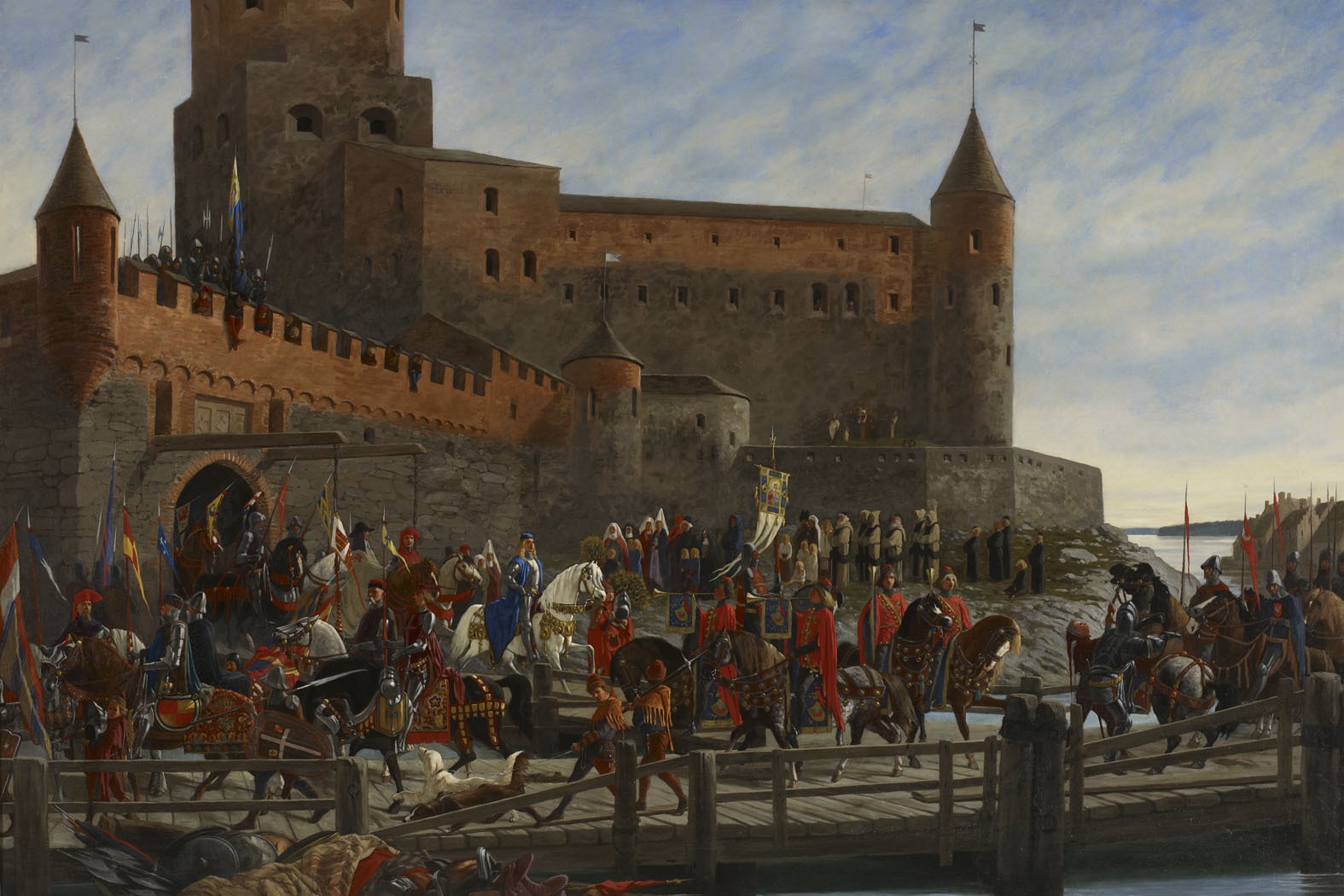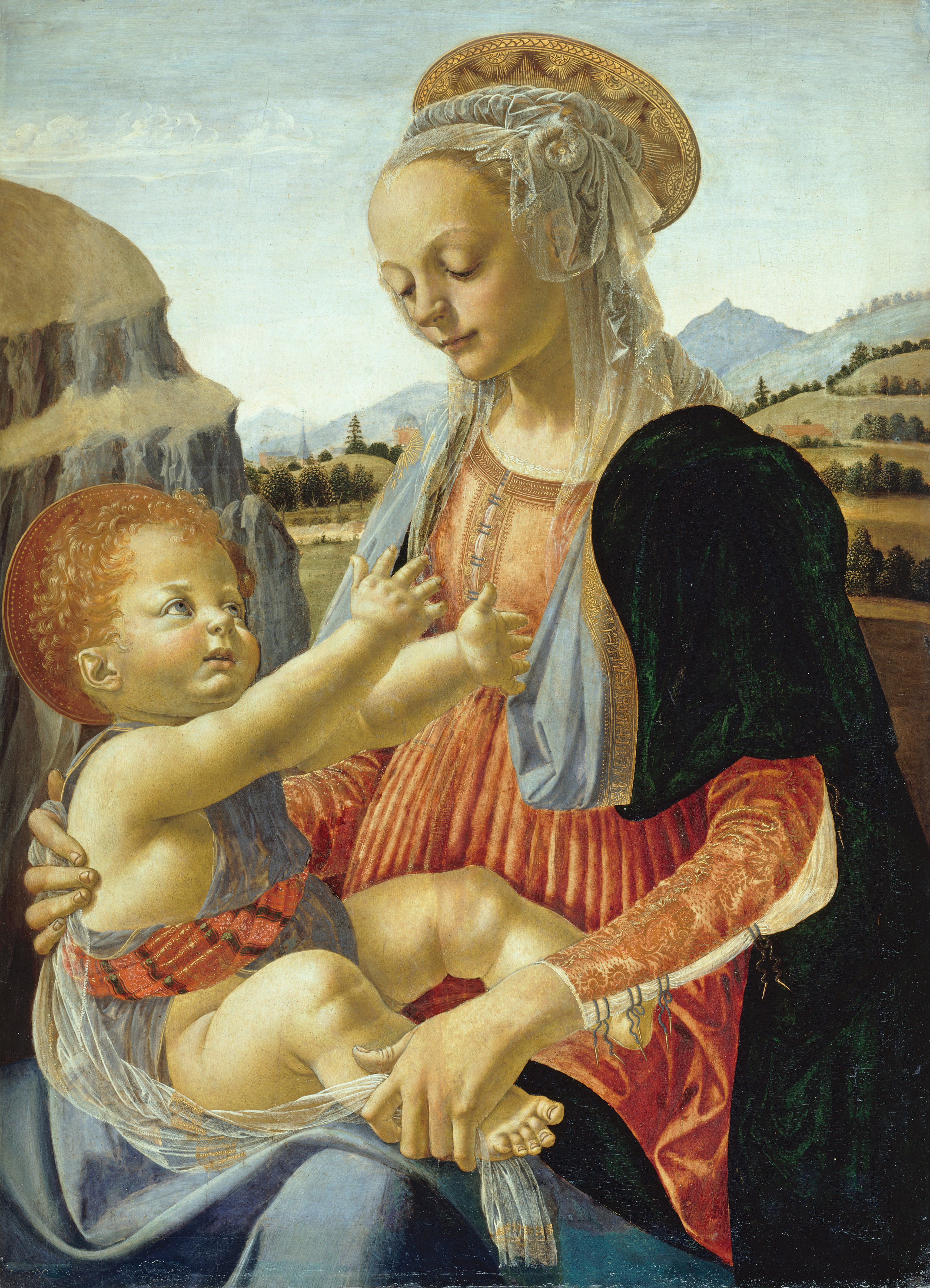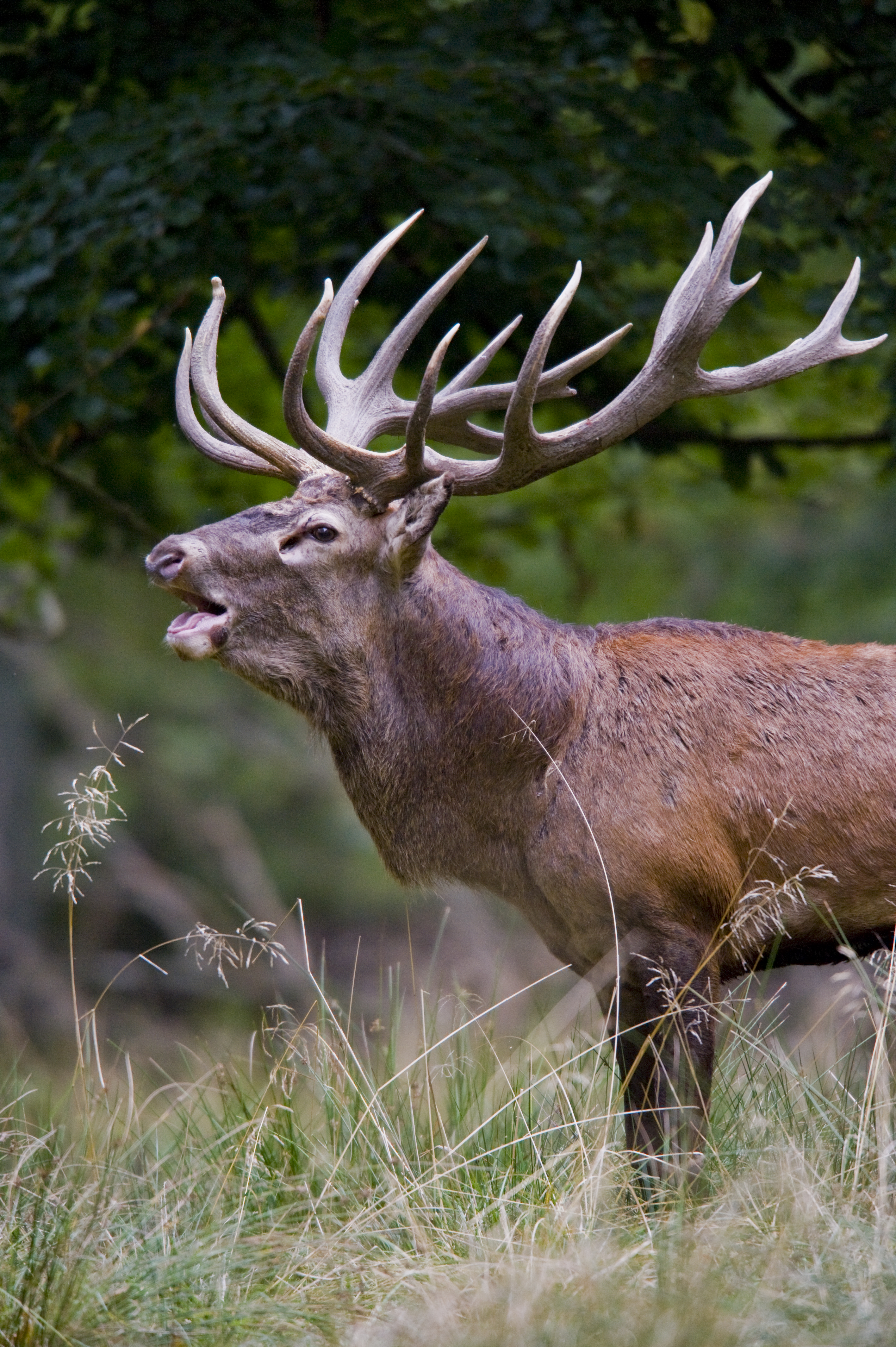|
Saint George And The Dragon (Notke)
''Saint George and the Dragon'' ( sv, Sankt Göran och draken) is a late medieval wooden sculpture depicting the legend of ''Saint George and the Dragon'', located in Storkyrkan in Stockholm, Sweden. It is attributed to Bernt Notke and was commissioned by the Swedish regent Sten Sture the Elder. It was inaugurated in 1489. It has been described as an artistic high point in the artistic production of Bernt Notke. History The statue was commissioned by Sten Sture the Elder following his victory over the Danish army in the Battle of Brunkeberg in 1471. During the battle, Sten Sture put his army under the protection of Saint George. Although not signed by him, the sculpture is widely attributed to the workshop of Bernt Notke. Notke, who had his workshop in Lübeck, lived in Sweden between 1491 and 1497 and was a frequent visitor to the country before that. The sculpture was inaugurated on New Year's Eve 1489 by a papal nuncio. The symbolism of the sculpture can be interpreted in relig ... [...More Info...] [...Related Items...] OR: [Wikipedia] [Google] [Baidu] |
Stockholm Storkyrkan - January 2018 - 2
Stockholm () is the capital and most populous city of Sweden as well as the largest urban area in the Nordic countries. Approximately 1 million people live in the municipality, with 1.6 million in the urban area, and 2.4 million in the metropolitan area. The city stretches across fourteen islands where Lake Mälaren flows into the Baltic Sea. Outside the city to the east, and along the coast, is the island chain of the Stockholm archipelago. The area has been settled since the Stone Age, in the 6th millennium BC, and was founded as a city in 1252 by Swedish statesman Birger Jarl. The city serves as the county seat of Stockholm County. Stockholm is the cultural, media, political, and economic centre of Sweden. The Stockholm region alone accounts for over a third of the country's GDP, and is among the top 10 regions in Europe by GDP per capita. Considered a global city, it is the largest in Scandinavia and the main centre for corporate headquarters in the N ... [...More Info...] [...Related Items...] OR: [Wikipedia] [Google] [Baidu] |
Charles VIII Of Sweden
Charles VIII ( sv, Karl; 1408–1470), contemporaneously known as Charles II and called Charles I in Norwegian context, was king of Sweden (1448–1457, 1464–1465 and 1467–1470) and king of Norway (1449–1450). Regnal name Charles was the second Swedish king by the name of Charles (Karl). ''Charles VIII'' is a posthumous invention, counting backwards from Charles IX (r. 1604–1611) who adopted his numeral according to a fictitious history of Sweden. Six others before Charles VII are unknown to any sources before Johannes Magnus's 16th century book ', and are considered his invention. Charles was the first Swedish monarch of the name to actually use a regnal number as ''Charles II'' (later retrospectively renumbered VIII), on his wife's tombstone (1451) at Vadstena. Early life Karl Knutsson was born in October 1408 or 1409, at Ekholmen Castle, the son of Knut Tordsson ( Bonde), knight and member of the privy council (''riksråd''), and Margareta Karlsdotter (Sparre av ... [...More Info...] [...Related Items...] OR: [Wikipedia] [Google] [Baidu] |
Bronze
Bronze is an alloy consisting primarily of copper, commonly with about 12–12.5% tin and often with the addition of other metals (including aluminium, manganese, nickel, or zinc) and sometimes non-metals, such as phosphorus, or metalloids such as arsenic or silicon. These additions produce a range of alloys that may be harder than copper alone, or have other useful properties, such as strength, ductility, or machinability. The archaeological period in which bronze was the hardest metal in widespread use is known as the Bronze Age. The beginning of the Bronze Age in western Eurasia and India is conventionally dated to the mid-4th millennium BCE (~3500 BCE), and to the early 2nd millennium BCE in China; elsewhere it gradually spread across regions. The Bronze Age was followed by the Iron Age starting from about 1300 BCE and reaching most of Eurasia by about 500 BCE, although bronze continued to be much more widely used than it is in modern times. Because histori ... [...More Info...] [...Related Items...] OR: [Wikipedia] [Google] [Baidu] |
Saint George And The Dragon (Otto Meyer)
The ''Saint George and the Dragon'' sculpture is located in Köpmantorget (''Merchants' Street'') in Gamla stan, Stockholm, Sweden. Unveiled on 10 October 1912, marking the anniversary of the Battle of Brunkeberg, it is a bronze replica of Bernt Notke's wooden ''Saint George and the Dragon'', which is in Stockholm's Storkyrkan. It is dedicated to Saint George, in particular the legend of Saint George and the Dragon In a legend, Saint Georgea soldier venerated in Christianitydefeats a dragon. The story goes that the dragon originally extorted tribute from villagers. When they ran out of livestock and trinkets for the dragon, they started giving up a human tr .... The sculpture was moulded by Otto Meyer. It depicts the knight, sword raised, about to deliver the final blow to the dragon, which is lying prone on its back having been lanced. File:Sankt Göran 1912.jpg, The sculpture's unveiling ceremony, 10 October 1912, looking northwest References External links {{Comm ... [...More Info...] [...Related Items...] OR: [Wikipedia] [Google] [Baidu] |
Köpmantorget
Köpmantorget (Swedish: "Merchant's Square") is a small public square in Gamla stan, the old town in central Stockholm, Sweden. It is located between the street Köpmangatan to the west and between two slopes collectively named Köpmanbrinken, both of which lead down to the street Österlånggatan. On its western side, two streets lead north and south: Bollhusgränd and Baggensgatan respectively. History This small square was, notwithstanding the name, never used as a market. Instead, when it first appeared in historical records on a map dated 1733 as ''Kiöpmanne T.'', it was named after its location on the eastern end of Köpmangatan, the street leading to Stortorget, the square which used to be the main market place in Stockholm for centuries. Before 1685, the two blocks north and south of the square were united and on the location was a vault (''Köpmanvalvet'') during the Middle Ages forming one of the city gates (''Köpmanporten''). The penultimate name referring to the ... [...More Info...] [...Related Items...] OR: [Wikipedia] [Google] [Baidu] |
Saint Catherine Church, Lübeck
In religious belief, a saint is a person who is recognized as having an exceptional degree of holiness, likeness, or closeness to God. However, the use of the term ''saint'' depends on the context and denomination. In Catholic, Eastern Orthodox, Anglican, Oriental Orthodox, and Lutheran doctrine, all of their faithful deceased in Heaven are considered to be saints, but some are considered worthy of greater honor or emulation. Official ecclesiastical recognition, and consequently a public cult of veneration, is conferred on some denominational saints through the process of canonization in the Catholic Church or glorification in the Eastern Orthodox Church after their approval. While the English word ''saint'' originated in Christianity, historians of religion tend to use the appellation "in a more general way to refer to the state of special holiness that many religions attribute to certain people", referring to the Jewish tzadik, the Islamic walī, the Hindu rishi or Sikh gu ... [...More Info...] [...Related Items...] OR: [Wikipedia] [Google] [Baidu] |
Andrea Del Verrocchio
Andrea del Verrocchio (, , ; – 1488), born Andrea di Michele di Francesco de' Cioni, was a sculptor, Italian painter and goldsmith who was a master of an important workshop in Florence. He apparently became known as ''Verrocchio'' after the surname of his master, a goldsmith. Few paintings are attributed to him with certainty, but a number of important painters were trained at his workshop. His pupils included Leonardo da Vinci, Pietro Perugino and Lorenzo di Credi. His greatest importance was as a sculptor and his last work, the Equestrian statue of Bartolomeo Colleoni in Venice, is generally accepted as a masterpiece. Life Verrocchio was born in Florence in around 1435. His father, Michele di Francesco Cioni, initially worked as a tile and brick maker, then later as a tax collector. Verrocchio never married, and had to provide financial support for some members of his family. He was at first apprenticed to a goldsmith. It has been suggested that he was later apprenticed t ... [...More Info...] [...Related Items...] OR: [Wikipedia] [Google] [Baidu] |
Equestrian Statue Of Bartolomeo Colleoni
The Equestrian statue of Bartolomeo Colleoni is a Renaissance sculpture in Campo Santi Giovanni e Paolo, Venice, Italy, by Andrea del Verrocchio in 1480–1488. Portraying the condottiero Bartolomeo Colleoni (who served for a long time under the Republic of Venice), it has a height of 395 cm excluding the pedestal. It is the second major equestrian statue of the Italian Renaissance, after Donatello's equestrian statue of Gattamelata (1453). History In 1475, the Condottiero Colleoni, a former Captain General of the Republic of Venice, died and by his will left a substantial part of his estate to the Republic on condition that a statue of himself should be commissioned and set up in the Piazza San Marco. In 1479 the Republic announced that it would accept the legacy, but that (as statues were not permitted in the Piazza) the statue would be placed in the open space in front of the ''Scuola'' of San Marco. A competition was arranged to enable a sculptor to be selected. Three s ... [...More Info...] [...Related Items...] OR: [Wikipedia] [Google] [Baidu] |
Philippe Dollinger
Philippe Dollinger (born 1 December 1904 in Strasbourg; died 14 September 1999 in Strasbourg) was a French historian, known particularly for his work on the history of the Hanse. Biography Philippe Dollinger attended the Gymnasium Fustel de Coulanges. Dollinger studied history at the University of Strasbourg. He was a pupil of Marc Bloch, Charles-Edmond Perrin and Lucien Febvre. In 1931 he pursued the Agrégation d'Histoire et géographie. From 1932 to 1945 he was a teacher at the Gymnasiums in Colmar, Reims, Strasbourg and Paris. From 1932 until 1934 he worked at the Institut francais in Berlin and in the Bavarian Archives. In 1945 Dolliner became professor of Alsatian history at the University of Strasbourg and became leader of the "Institut des hautes études alsaciennes". In 1947 he received his doctorate at the University of Strasbourg with the work ''L'évolution des classes rurales en Bavière depuis la fin de l'époque carolingienne jusqu'au milieu du treizième siècl ... [...More Info...] [...Related Items...] OR: [Wikipedia] [Google] [Baidu] |
Stockholm City Museum
The Stockholm City Museum ( sv, Stadsmuseet i Stockholm) is a museum documenting, preserving and exhibiting the history of Stockholm. The museum is housed in Södra Stadshuset at Slussen on Södermalm. The building was completed in 1685. In the 1930s the museum moved in and opened to the public in 1942. The museum is the largest municipal museum in Sweden, and houses collections which include 300,000 items of historical interest; 20,000 works of art and 3 million photographs. The City Museum closed for renovation January 12, 2015 and reopened on April 27, 2019. The museum is governed by the Cultural Affairs and Sports Division of the City of Stockholm. The city museum, the Museum of Medieval Stockholm and Stockholmia Förlag (which publishes books on Stockholm and Stockholm's history) operate as one department within the division. All political decisions are made by the specialist committee for Cultural Affairs. One of the museum's units – Cultural Heritage Department – "Kult ... [...More Info...] [...Related Items...] OR: [Wikipedia] [Google] [Baidu] |
Antler
Antlers are extensions of an animal's skull found in members of the Cervidae (deer) family. Antlers are a single structure composed of bone, cartilage, fibrous tissue, skin, nerves, and blood vessels. They are generally found only on males, with the exception of reindeer/caribou. Antlers are shed and regrown each year and function primarily as objects of sexual attraction and as weapons. In contrast to antlers, horns—found on pronghorns and bovids, such as sheep, goats, bison and cattle—are two-part structures that usually do not shed. A horn's interior of bone is covered by an exterior sheath made of keratin (the same material as human fingernails and toenails). Etymology Antler comes from the Old French ''antoillier '' (see present French : "Andouiller", from'' ant-, ''meaning before,'' oeil, ''meaning eye and'' -ier'', a suffix indicating an action or state of being) possibly from some form of an unattested Latin word ''*anteocularis'', "before the eye ... [...More Info...] [...Related Items...] OR: [Wikipedia] [Google] [Baidu] |








